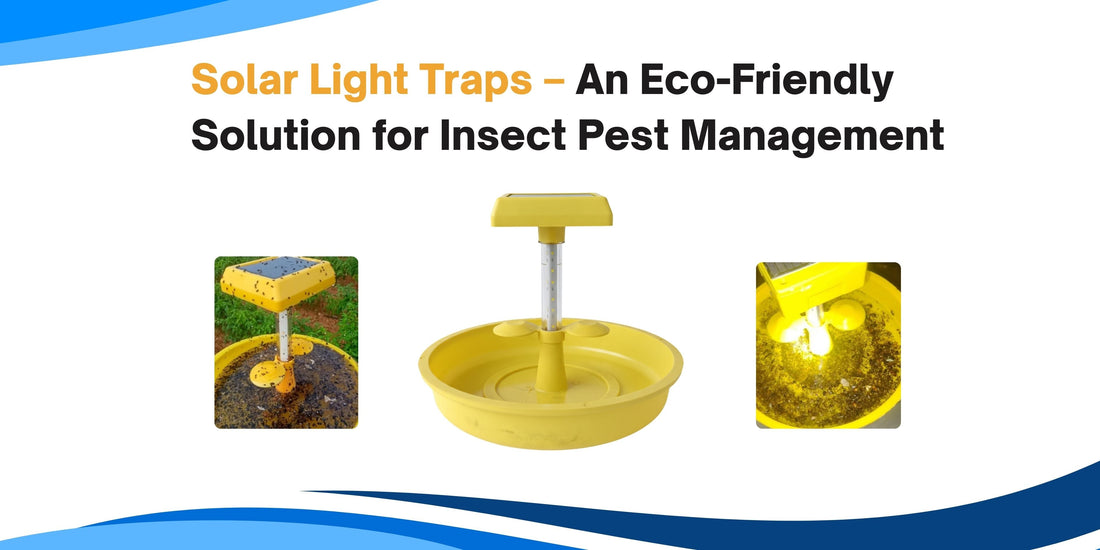
Solar Light Traps – An Eco-Friendly Solution for Insect Pest Management
Introduction
In modern agriculture, pest management plays a crucial role in securing healthy crops and better yields. However, the overuse of chemical pesticides has led to serious problems — soil degradation, loss of beneficial insects, water contamination, and risks to human health.
As farmers and agri-innovators search for safer alternatives, solar light traps have emerged as a powerful, eco-friendly solution for controlling harmful insect pests naturally without chemicals.
What are Solar Light Traps?
A solar light trap is a smart device that uses light energy to attract and capture insect pests. It runs on solar power, making it energy-efficient and suitable for remote farm locations.
Each unit typically consists of:
- Solar panel – collects sunlight and converts it into electricity.
- Battery – stores power to run the trap during night.
- LED light – emits specific wavelengths to attract pests.
- Trap unit or container – collects or kills the attracted insects.

These traps work especially well during evening and night hours when most flying insect pests are active.
How Do They Work in Pest Management?
The working principle is simple yet highly effective.
At night, the LED light attracts insects like moths, beetles, and borers. Once they come close, they get trapped in the funnel or container below. Gradually, this reduces the overall insect population in the field, lowering pest damage.
Common pests effectively controlled include:
- Leaf folder
- Stem borer
- Bollworm
- Armyworm
- Fruit borer
- Cutworm
For best results, install the light trap at crop canopy height, preferably 10–15 feet apart depending on the field size. Switch it on at dusk and off at dawn to target nocturnal pests efficiently.
Advantages of Using Solar Light Traps
- Reduces Pesticide Use: Helps minimize chemical sprays, saving money and protecting the environment.
- Eco-Friendly: Safe for beneficial insects like bees and ladybird beetles.
- Cost-Effective: Once installed, operational costs are minimal since it runs on solar power.
- Pest Monitoring Tool: Helps farmers observe pest trends and take timely action.
- Improves Yield: Healthier crops, reduced pest load, and cleaner produce.
- Sustainable Agriculture: Promotes Integrated Pest Management (IPM) practices.
Field Experience
Many progressive farmers across India have adopted solar light traps and reported impressive results.
For example, a farmer in Telangana shared that after installing solar traps in his cotton and red gram fields, pest attacks reduced by 60–70%, and pesticide spraying costs came down drastically.
Such experiences prove that these devices not only reduce pest pressure but also support sustainable and organic farming.
Maintenance and Usage Tips
To ensure long life and maximum efficiency:
- Clean the trap regularly to remove dead insects and dust.
- Keep solar panels free from mud and leaves.
- Turn on lights during dusk and off at dawn (many traps are automatic).
- Replace batteries every 1–2 years if required.
With regular maintenance, a solar light trap can last for 3 years or more.
Conclusion
Solar light traps are a simple, cost-effective, and environmentally friendly tool for pest control. They play a vital role in Integrated Pest Management (IPM) by reducing dependency on harmful pesticides and promoting eco-balance in farms.
“Solar light traps not only protect crops but also protect nature — making them the light of hope for sustainable farming.”
